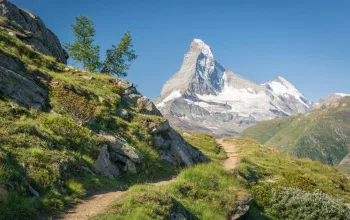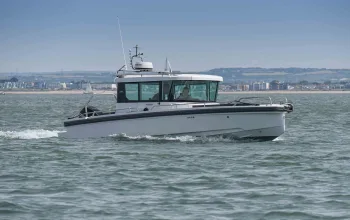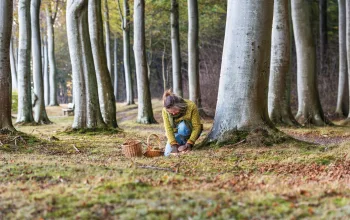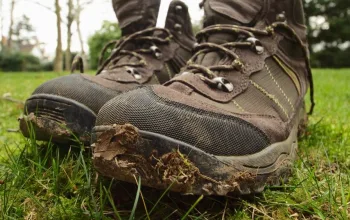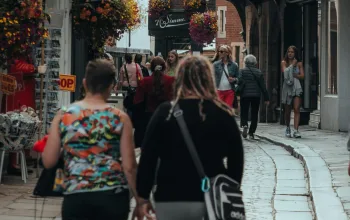Peakspeak
Baggin' peaks: the practice of claiming a peak once you’ve been to the top. Some people are just out to bag as many peaks as possible and don’t fully appreciate their surroundings.
Topping out: celebrations when reaching the top of a peak, especially a new peak you’ve never climbed before, or one which has never been climbed. Hot chocolate or even champagne.
Cragrat: a mildly offensive moniker for walkers who hike in large groups, always in a mad rush.
Lish-un: Yorkshire dialect that means a lively sheep, used about a person who has a love of the outdoors, and is fit and energetic.
Ligger: Yorkshire dialect, this time referring to a cowering, lifeless sheep. In people terms, ‘a ligger’ is slow or reluctant .
Teashop walker: if you’re the kind to amble along, happy in the knowledge that there’s tea and cake or a beer and ploughman’s just over the next hill, this is you.
Dead reckoning: Combining direction, distance and time to calculate location. For example, if you know you walk 100m in 100 paces on average, you can figure out how far you have gone pretty accurately. Add to that the direction you’ve been going in since the last waypoint or landmark, and you’ll have your location.
Idiot-proof: Ordnance Survey (OS) maps
- OS maps are always printed so that north is at the top of the map
- The scale most commonly used by walkers is 1:25,000, in which case grid lines are 1km apart
- Contours are illustrated by brown lines in the shape of the landscape, the closer together, the steeper the slope. Numbers on the lines give the height.
Continued...
 Lost!
Lost!
The things dropped or left behind by hill walkers
- Gloves Always a single glove, never a pair
- Rubbish Top of the list are plastic water bottles, fruit skins and tissue paper. We say: ‘If you take it up, take it down and put it in a bin’
- Occasionally, a handheld GPS. That walker has to be kicking themselves – they can’t show off
- their prized gadget in the pub
- A full set of false teeth, was even found last year, perched on top of a crag, admiring the view
- Walking poles Like umbrellas, easy to forget!
Don’t get lost! Step-by-step compass clinic
1. Placing your compass flat on the map, line up your current position with your desired destination using the side of the base plate.
2. Turn the dial so the orienting arrow aligns with the blue north-running grid lines on the map.
3. Lift the compass off the map, and turn the whole compass until the orienting arrow lines up with the red needle. Add three degrees to the bearing to take account of the variation between magnetic and true north.
4. The travel arrow now points in the way you need to go.
And remember
- If you're walking towards the sun you can't be heading north, northwest, or northeast. Think again.
- Keep your compass away from metal objects.
- Hold the compass level or the needle may not turn properly in the housing.
Six safety tips for hill walker
1 Always wear boots with ankle support – if you badly sprain or even break an ankle it will not be easy to get back down the hill.
2 Let someone know where you’re going and when you’ll be back.
3 Check the weather forecast before you go.
4 Call 999 and ask for the police and then mountain rescue if there’s an accident. If there’s no signal leave the casualty, either to get a signal or find a landline.
5 Don’t walk off the map!
6 The BMC offers specialist insurance for hill walker, climbers and mountaineers
Continued...
How to spot two TYPICAL hill walkers at 50 paces...
|
|
Traditional vs |
Techno |
|
In their backpack |
Kendal Mint cake – malt loaf, Thermos, home-made sarnies |
An energy bar or a Science in Sport gel pack in citrus
|
|
Boots |
Leather boots – try Brasher’s classic styles for size |
Inov8 Roclite 370 GTX Para Extreme – super lightweight and supportive or Meindel’s Vacuum with vacuum foam for comfort |
|
Socks |
Inexplicably, red is popular
|
Falke hiking-specific Coolmax socks
|
|
Navigation |
Compass, sunlight, stars, ear to the ground, animal tracks and cracked twigs
|
The latest satnav with ergonomic one-button control, the Garmin Colorado 300 or a hi-tech watch, sorry, wrist computer, such as the Suunto Observer Titanium, with a digital compass |
|
Stick |
A locally-made wooden stick, possibly adorned with been-there-done-that badges |
Lightweight, retractable, ergonomic walking poles by German manufacturer Leki
|
|
Overnight |
Bothies (hut-like shelters in remote parts)
|
Lightweight bivi, such as one by Terra Nova
|
|
Style |
A dark-coloured Regatta jacket, and plaid skirts or corduroys. Occasional tweed. Hand-knitted woolly hat |
Something primary-coloured and by North Face, with Gore-Tex Pro Shell technology
|
|
Membership |
Ramblers Association (ramblers.org.uk)
|
British Mountaineering Council (thebmc.co.uk)
|
|
About their person |
A tattered copy of Alfred Wainwright’s tome on the Lakeland Fells and binoculars for birdwatching |
Icepick, crampons and ropes must be dangling off the rucksack in case the Eiger crashlands in the Lakes |



 Walking tips
Walking tips

